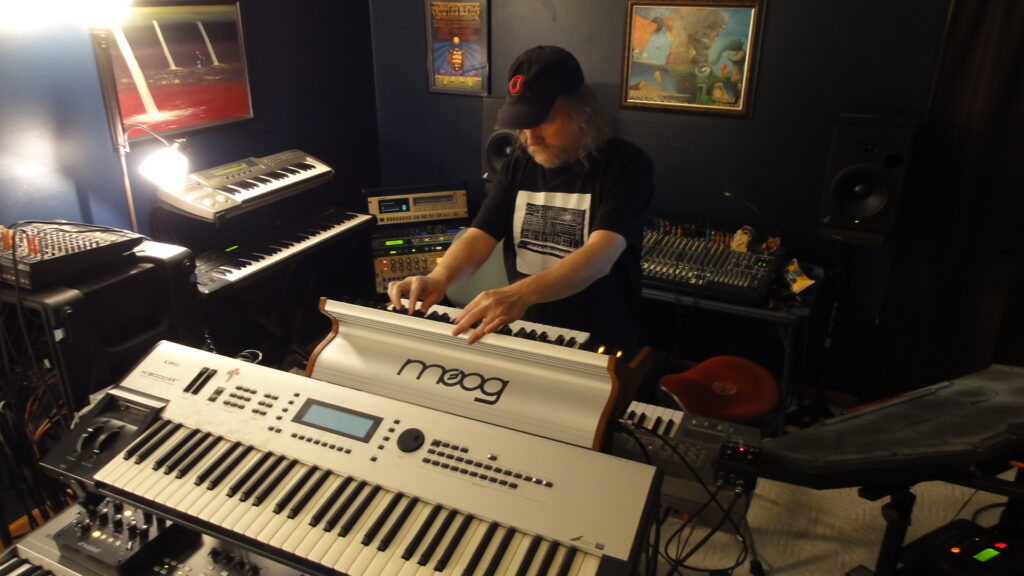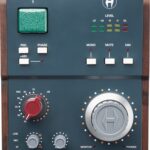Here’s Side 2 of the studio production notes for the 2022 Church of Hed album, The Father Road, an aural travelogue tracing the Lincoln Highway from San Francisco to New York City. Check out the prologue, where we cover the studio setup, our recording philosophy, as well as the hardware and software gear used for making the album. The prologue also includes background information on the entire Rivers of Asphalt project.

We separated these recording notes for The Father Road into four sides, ironic considering the lack of a vinyl release of the album. So dive right in to learn about the production approach of this double album, had we released it on vinyl.
Side 1 offers insights on the album from the Pacific Ocean outside of San Francisco Bay to the desert border between Nevada and Utah. This article covers the production from Utah to the Mississippi River when the LH crossed into Illinois. Side 3 takes us through Illinois all the way to the foothills of the Appalachians. Side 4 covers the LH from Bedford, PA to Times Square and beyond.
6. Salt And Snow (2:37)
The salt and snow of Utah highlight the Lincoln Highway’s pathway through the state. This track began on the iPad using a string patch from Garage Band. I created the initial chord progression years ago and thought it worked well as an interlude when traveling through the Salt Lake City area on the way to the Wasatch Mountains.
Playing around with a few delayed piano ideas inspired some of the few overdubs on this piece. Reversing the audio on the piano track added a welcome psychedelic sense to the proceedings. Other overdubs, especially Stan Lyon’s trippy e-Bow guitar serve as additional scenery as we approach the Wasatch range.
7. Wasatch Descent (2:16)
The track takes the mountain motif (and drumbeat) used on Sierra Ascent 2 and effectively flips it. It serves as an interlude as we prepare to cross the State of Wyoming at nighttime. Stan provides an absolutely bizarre guitar solo to go along with his bass work.
Even though the Arturia DrumBrute pattern is in 4/4, I mostly played a 3/4 drum beat on the track. Polyrhythms when traveling old roads like the Lincoln Highway remain fun. This mountain beat returns in another slightly altered format – and a different bass synth sequence – when traversing the Alleghenies later in The Father Road.
8. Under Wyoming Stars (5:11)
What eventually became Under Wyoming Stars first appeared as a sequence using Arturia’s excellent CS-80 V synth plugin. Soon after deciding to develop the piece for the Wyoming section of The Father Road, Stan and I crafted a few ambient overdubs, him on guitar and bass in addition to me on synth. However, over time, this track seemed less inspiring compared to the rest of the album.
I changed things somewhat by adding a “sequenced” bassline using the Farfisa plugin from Arturia’s V Collection. Finally, the piece found its sonic home and remains one of my favorite tracks on the album. However, this new part altered what served as a chord progression on the track.
Stan’s original bassline didn’t fit and he never made it back to record a new one. However, I kept our original ambient overdubs as they still worked. Copious amounts of dreamy reverb (from Valhalla DSP and Eventide’s Blackhole) give this track a sense of the lonely two-lane under the nighttime stars.
9. Prairie Waves (3:37)
As the Lincoln Highway crosses the Great Plains, the music needed to take into account those wide open spaces. Additionally, an obvious influence of American progressive rock also came to the fore, namely Kansas and their main composer, Kerry Livgren. The track Prairie Waves embraces those influences in spades, with its mix of piano, Moog synthesizer, and the Waldorf Streichfett string synth. All three made up crucial components within Kansas’s sound, with the ARP String Ensemble replacing our modern Waldorf.
The rhythm section parts allowed Stan and myself to also return to our prog rock roots. Yes’s classic pairing of Chris Squire and Bill Bruford remain our two biggest influences on bass and drums, respectively. In the end, Prairie Waves provides a concise three-minute slab of prog, appropriate for a concept album tracing an old transcontinental road through the plains.
Note the track’s coda which serves as an introduction to The Derecho and marking the first appearance of the midwestern motif on the album. That motif gets repeated a few times throughout the rest of the composition, finally ending over Long Island Sound in Times Square And The Shining Sea.
10. The Derecho (3:38)
At one time, I considered combining Prairie Waves and The Derecho into one track. However, the entire album is made up of two to three-minute vignettes and interludes with the exception of The Loneliest Road. As such, keeping the two separate made more sense. With repeated listens, the sharing of common motifs, chord progressions, and melodies throughout The Father Road become more apparent.
The sonic palette for The Derecho also draws from 70s prog rock, combining piano, electric piano, strings, and analog synth effects. The ending section expresses the time when a derecho scraped across Iowa in August of 2020. Like Prairie Waves, this track also provides a hint of country music underneath that prog veneer. Middle-American comfort music for progressive rock fans.
Check out the other installments of the recording notes for the Church of Hed album, The Father Road.

[…] As a prologue, let’s provide a few insights on The Father Road album itself and our recording setup, including the DAW, studio gear, and other items relating to the album’s production. In the other four articles, we’ll dive into each track and the bespoke recording approach making each a sonic reality. Enjoy the journey. Check out Side 1 and Side 2! […]